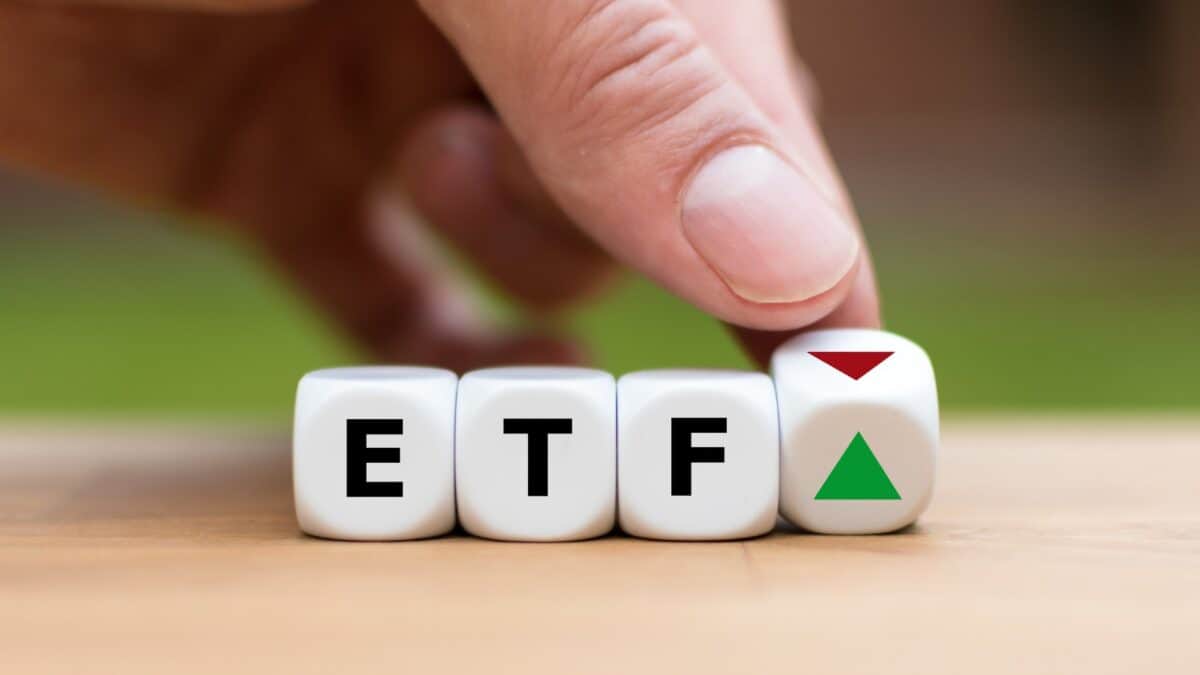Investing for passive income doesn’t have to be hard. A single investment can carry on building wealth for life without one needing to lift a finger.
The good news is that the ability to earn a growing dividend income is well within reach for the vast majority of savers.
Indeed, I can build a £54,159 dividend stream just by consistently investing £500 a month in a simple Vanguard exchange-traded fund (ETF). Here’s how.
Should you invest £1,000 in Apple right now?
When investing expert Mark Rogers has a stock tip, it can pay to listen. After all, the flagship Motley Fool Share Advisor newsletter he has run for nearly a decade has provided thousands of paying members with top stock recommendations from the UK and US markets. And right now, Mark thinks there are 6 standout stocks that investors should consider buying. Want to see if Apple made the list?
The simple investment
The Vanguard FTSE 100 UCITS ETF (LSE:VUKE) tracks the FTSE 100‘s returns. So not only does it go up or down when the index does, but it also dishes out dividends to shareholders.
As at 31 March, the 10 biggest holdings were:
| Stock | % of fund |
|---|---|
| Shell | 8.60% |
| AstraZeneca | 7.95% |
| HSBC | 5.96% |
| Unilever | 4.97% |
| BP | 4.17% |
| GSK | 3.46% |
| RELX | 3.27% |
| Diageo | 3.26% |
| Rio Tinto | 2.75% |
| Glencore | 2.66% |
All these stocks pay dividends. Some of their yields are quite modest (that of data analytics firm RELX is 1.78%), while others are much meatier (HSBC yields 7.52%).
Collectively though, Footsie payouts add up and give the ETF a dividend yield of 3.84%.
This is unlike the US, where indexes are dominated by tech giants like Alphabet (nee Google) and Amazon that have never paid dividends. The average yield of the S&P 500 is a paltry 1.31%.
Dividend diversification
While dividends aren’t guaranteed, investors can benefit from broad exposure to the FTSE 100. Broad exposure reduces the impact of individual companies or whole sectors cutting their payouts.
For example, UK housebuilders have been taking the axe to their dividends over the past year due to higher interest rates and a slowdown in the property market. Offsetting this, however, have been banks, which have hiked their own payouts after benefitting from higher interest income.
Another key strength of the UK blue-chip index is that it is truly global. In fact, over 80% of the sales of FTSE 100 companies now come from outside the UK, according to London Stock Exchange Group.
This diversification is an important feature of the ETF. Another is low fees, with the ongoing charge just 0.09%.
Investing £500 per month
Over the last 10 years, the ETF has produced a cumulative return of 75% (share price gains and dividends).
Now, this is perhaps one criticism I’d have here. It tracks the FTSE 100, which has long underperformed other major global indexes on a share price return basis. This underperformance could continue.
However, for the purposes of solid and dependable income, no other index comes close.
So let’s take that 7.5% a year as our average return. If I put in £500 every month and reinvested my dividends, here’s how the portfolio value could build up.
| Period (years) | Portfolio value | Annual dividend income (reinvested) |
|---|---|---|
| 1 | £6,206 | £238 |
| 5 | £36,048 | £1,384 |
| 10 | £87,800 | £3,371 |
| 15 | £162,097 | £6,224 |
| 20 | £268,759 | £10,320 |
| 25 | £421,887 | £16,200 |
| 30 | £641,722 | £24,642 |
| 35 | £957,324 | £36,761 |
| 40 | £1,410,410 | £54,159 |
So, if I consistently invested into this ETF for 40 years, I could end up with annual passive income worth just over £54,000 (excluding any platform fees).
In other words, I could stop reinvesting dividends and start spending them! Or simply enjoy the nest egg I’d built up.
Of course, this is based on the fund’s current 3.84% yield, which in reality will fluctuate throughout this time. And inflation will mean £54k won’t have the same purchasing power in four decades as it does now.
Nevertheless, this Vanguard ETF is arguably the easiest option for building a sizeable future passive income stream. It practically takes no effort.








